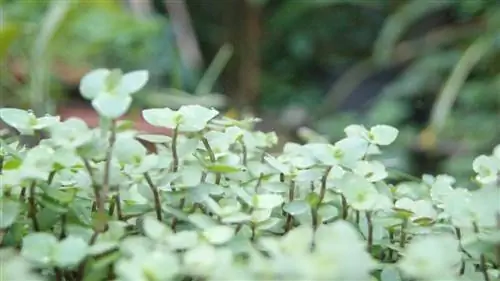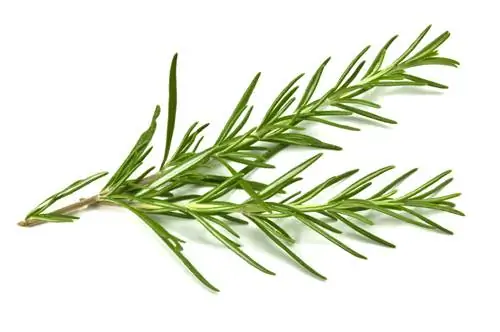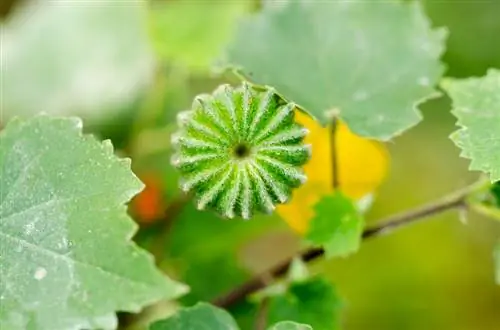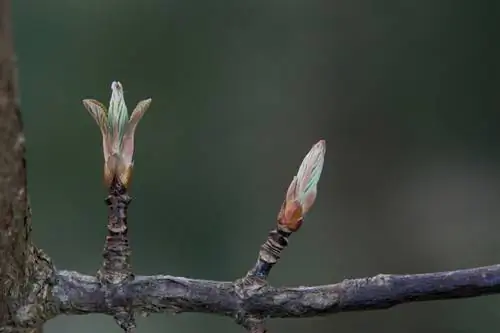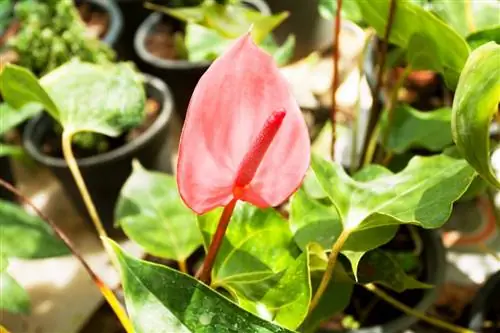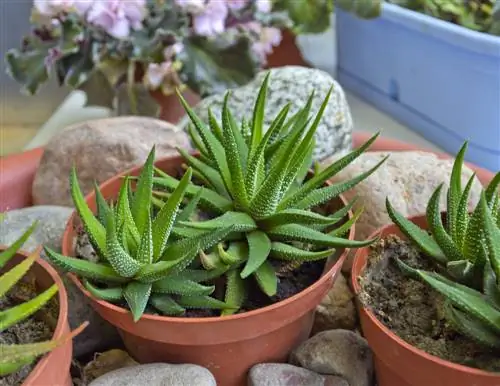- Author admin [email protected].
- Public 2023-12-16 16:46.
- Last modified 2025-01-23 11:22.
If you own a single Golliwoog, you will soon have dozens of specimens to call your own. This forage plant offers plenty of green material that can be used for propagation. Below you can learn about the two feasible methods in detail.
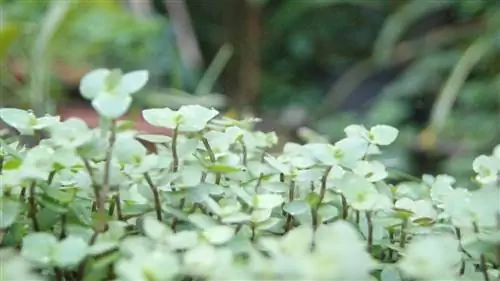
How to propagate Golliwoog?
Golliwoog can be propagated all year round by cuttings: Remove the lower leaves and shoot tips, allow the interfaces to dry, optionally root the cuttings in water and then plant them in moist potting soil. Alternatively, propagation can be done using lowering plants.
Possible propagation methods
Propagation from seeds is theoretically possible, but practically impossible. This is not just because this path is lengthy. The seeds of this plant are not even available on the market. You have these two options at home:
- Propagation from cuttings
- Propagation by reducers
Cut cuttings
You can cut cuttings for propagation all year round. Choose strong shoots at least 15 cm long. Remove the lowest leaves; only two to three pairs of leaves should remain on. Also cut the shoot tips. Place the cuttings in a shady place for about two hours so that the interfaces dry.
Rooting cuttings in the glass
The cuttings can first be placed in a glass of water so that they form roots before planting. A dark glass is more suitable for this purpose than a light one. Place the glass in the shade and at least 20 °C warm. After about 2 - 4 weeks, when plenty of roots appear, the cuttings are planted in soil.
Plant cuttings immediately
The detour in the glass can be saved because Golliwoog cuttings also root well in soil.
- Use moist potting soil (€6.00 on Amazon)
- alternatively sandy substrate
- plant several cuttings in the pot
- Place pot in a clear plastic bag
- pour some water in it and tie it up
- partially shaded and kept warm at 20 to 25 °C
- Open the bag once a week and air it out
As soon as the first new leaves form, it is clear that the cutting has rooted well. The plastic bag is completely removed. From then on, the young plant receives the care of an adult plant.
Tip
When planting unrooted cuttings, press the soil lightly so that the end of the stem comes into contact with the soil. Otherwise there is a high probability that the cutting will dry out instead of rooting.
Propagation by reducers
- Select a long, he althy shoot.
- Bend the shoot so that it then rests on the ground. This can be soil in your own pot or one provided separately.
- Remove the leaves at the point of contact.
- Cover the shoot with some substrate, but the shoot tip must remain free. If the shoot does not stay in position, you can weigh it down with stones or another object.
- Disconnect from the mother plant once the sinker has rooted.

